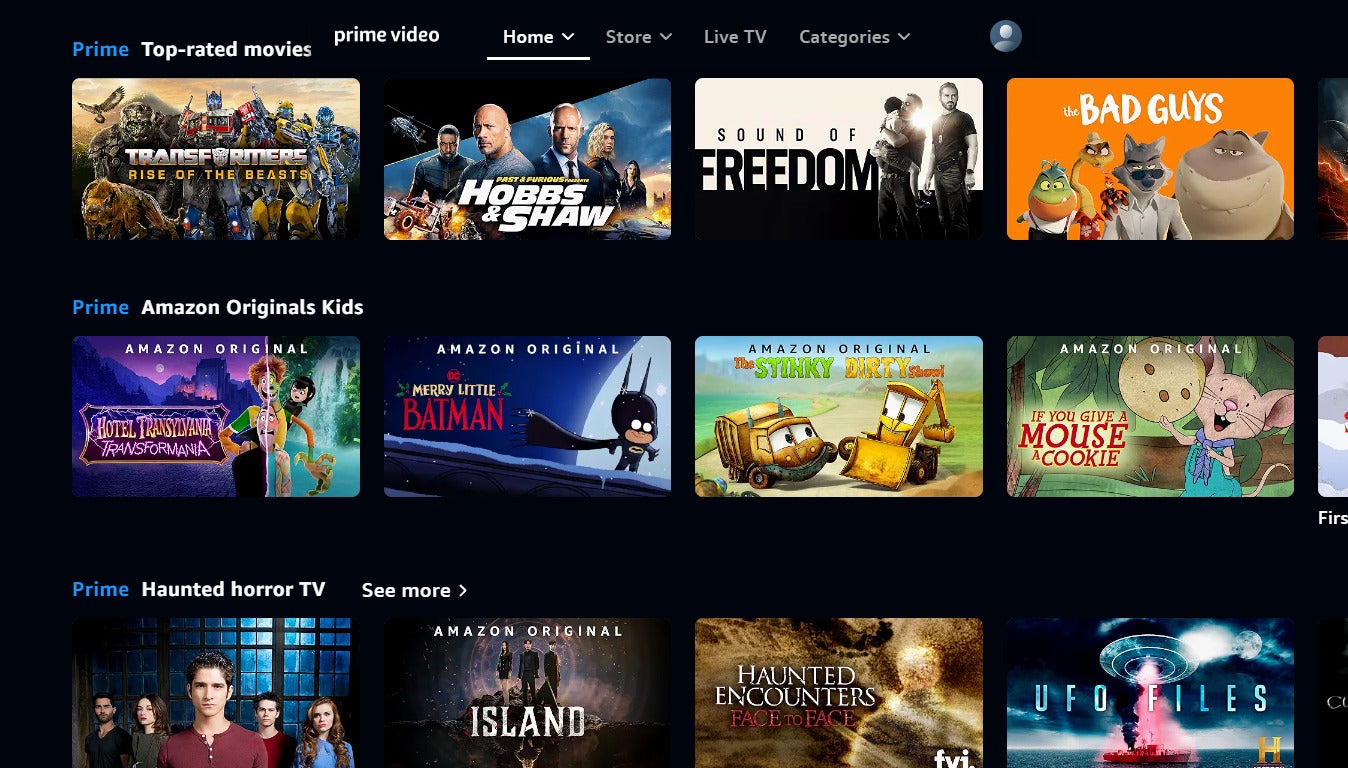Why Prime Video’s Move to Introduce Ads for All Current Customers Was Brilliant, Despite Subscriber Complaints
Customers may not like Prime Video’s methodology when launching its ad-supported plan, but it will likely lead to a tidy profit for Amazon.

Leave it to Amazon to zig when all of its competitors are zagging. The e-commerce behemoth made a significant change to its streaming service Prime Video by launching an ad-supported plan on Jan. 29, but instead of creating a new, cheaper ad-supported plan, Prime Video simply moved its existing ad-free customers to the ad-supported tier and created a new higher-priced option for those who wanted to remain ad-free.
- Amazon will collect more revenue from ad-supported customers, as well as those who go ad-free thanks to its method of launching an ad plan.
- Using this approach allows Prime Video to skip a slow build-up for its ad plan, which hampered streamers like Netflix.
- Streamers that introduced an ad-supported tier in the past year have seen their average revenue per user grow since its launch.
Why Did Amazon Introduce its Ad Plan the Way it Did?

The tried-and-true method of streaming platforms has been to introduce a new tier with ads that retails at a lower price point than existing ad-free plans. That’s what Netflix did in November 2022, and when the world’s largest and most financially successful streaming service does it that way, it’s logical to think that the other platforms considering the launch of an ad-supported plan would follow Netflix’s lead.
But Disney+ did things a little differently in December 2022, when its own ads plan launched. Much like Amazon, Disney launched the ad-supported plan at the same price that its ad-free plan had previously cost, but the company raised the price of ad-free streaming by $3 per month. And, unlike Prime Video, Disney+ had existing customers remain on the ad-free tier — albeit at a higher price — while offering the option to scale back to ad-supported. Disney pulled subscribers to its ad plan faster than Netflix did initially, and Amazon likely noticed that fact while determining the best path toward launching its own plan with ads.
Related: Prime Video Now Comes With Ads; We Tested the Ad-Supported Service to Answer All of Your Questions
Amazon’s plan goes one step further, converting all current subscribers to ad-supported users unless they actively upgrade. That’s one aspect of its brilliance; it forces customers to go to the trouble of canceling their subscription if they’re truly displeased. Less than 25% of Prime Video users report a willingness to cancel the service thanks to the introduction of ads, and the true churn reaction will likely be even less impactful. Many subscribers get Prime Video as a feature of their Amazon Prime account, which simply comes with too many other useful facets — including discounts, free two-day shipping, and Prime Days — to cancel just because of the introduction of ads on Prime Video.
Will Amazon Reap a Windfall From Ads Plan Rollout?

The simple economic truth of the matter is that Amazon will undoubtedly be collecting more money from all Prime Video subscribers moving forward, whether they pay extra to go ad-free or not. It will begin collecting ad revenues for every customer who doesn’t choose to upgrade to an ad-free plan, and it will get higher subscription revenues from those who do decide to level up to ad-free streaming.
Where Amazon could see the most critical gains is with its average revenue per user (ARPU). Netflix’s chief financial officer Spencer Neumann confirmed in April 2023 that just one quarter after its launch, its new ad-supported plan was outpacing the ad-free Basic plan (since discontinued for new subscribers) and the ad-free Standard plan in terms of ARPU. StreamTVInsider points out that Disney+ saw an APRU increase in the United States of 18% year-over-year in 2023, which is attributable to both the launch of its ad plan and an increase in prices for its ad-free tier.
ARPU is a critically important piece of the profitability equation that most streaming services are trying to crack nowadays. Higher ARPU means an easier path to profits, and Amazon just converted millions of Prime Video subscribers to a higher ARPU streaming tier. Now it doesn’t have to wait for its customers to slowly come around to the idea of ad-supported streaming as Netflix did; they can either accept it, pay more to avoid it, or go to the trouble of canceling their service because of it.
Amazon is betting that the last reaction will be the least-used by current subscribers, and historical trends suggest that’s a wise wager. The move to incorporate ads into its already-existing plan was a shrewd business move by Amazon that’s poised to pay off big time, even if it’s understandably ruffled the feathers of its Prime Video subscribers.
Amazon Prime Video
Amazon Prime Video is a subscription video streaming service that includes on-demand access to 10,000+ movies, TV shows, and Prime Originals like “The Lord of the Rings: The Rings of Power,” “Jack Ryan,” “The Marvelous Mrs. Maisel,” “The Boys,” and more. Subscribers can also add third-party services like Max, Showtime, STARZ, and dozens more with Amazon Prime Video Channels. Prime Video also offers exclusive live access to NFL Thursday Night Football.

